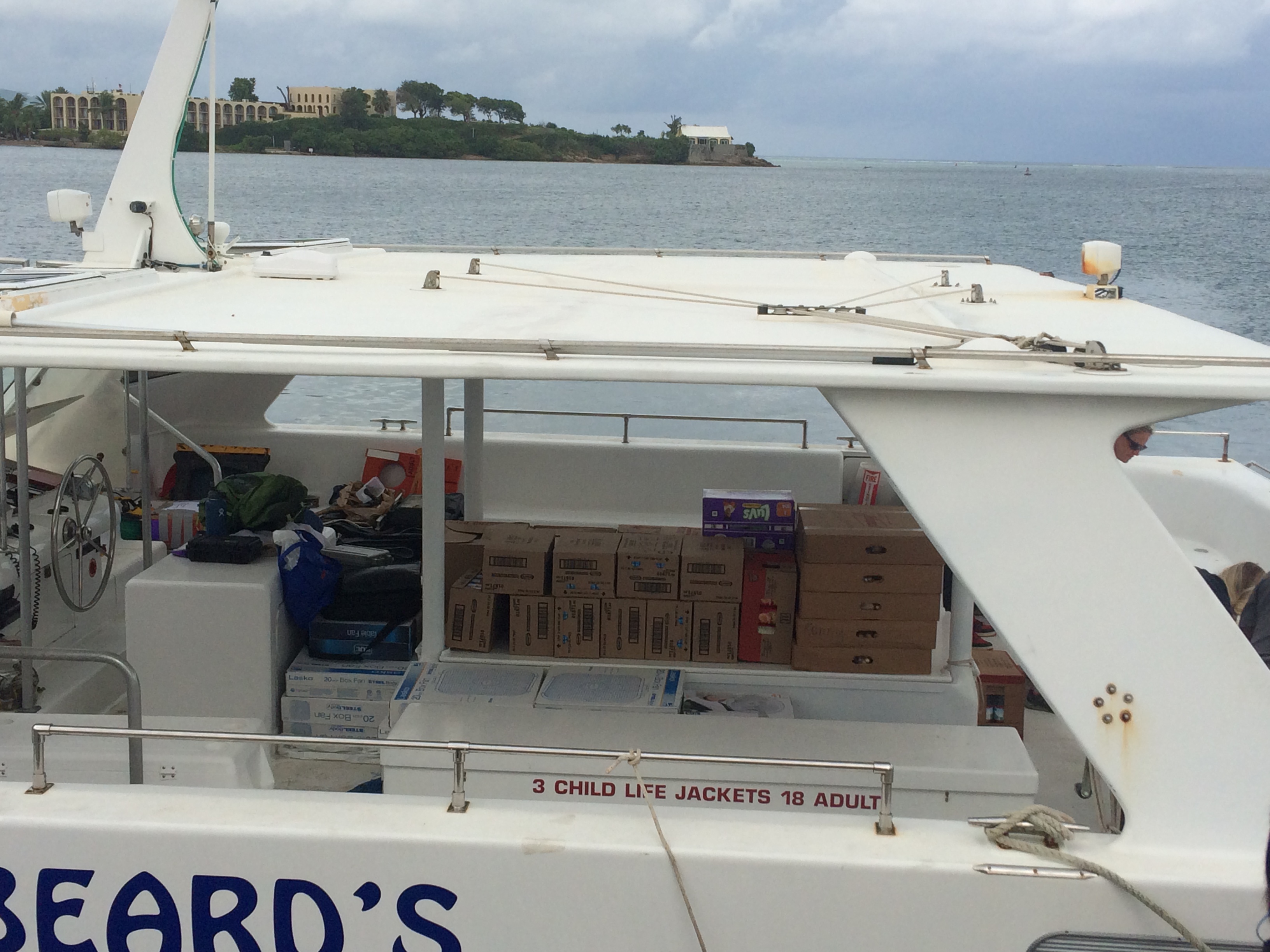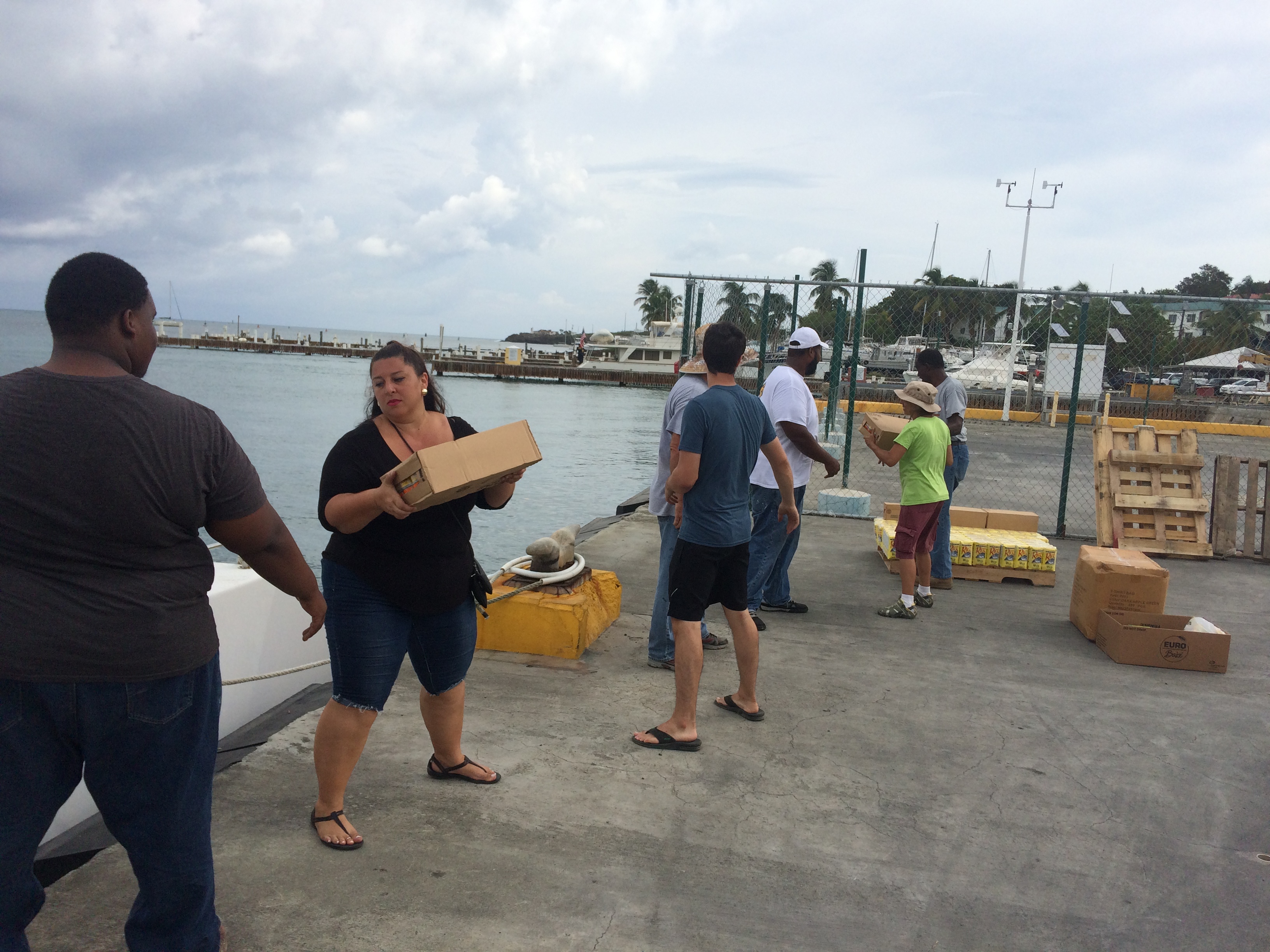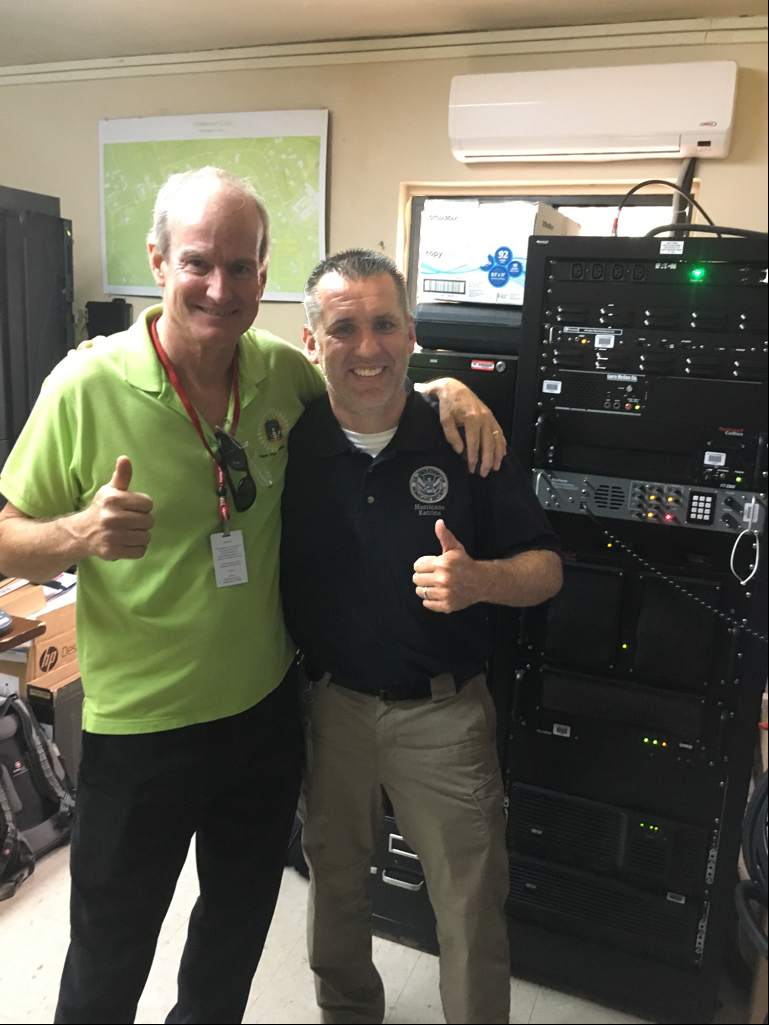 September 20, 2017 Editor: Paul Bourque, N1SFE | ||||||
IN THIS ISSUE
Even though you're probably all caught up on the latest in digital modes, you still should read Marshall, K5QE's document "VHF Contesting and the Digital Modes." There's plenty of information for operators on all bands. As the weather is changing, it's time or past time to get those outdoor weatherization projects finished before spending more time in the shack. September 22 is an equinox, a time when propagation on the HF bands typical ticks up for a few days before and after. Just because you don't hear anyone doesn't mean the band isn't open. Try sending a few CW CQs while watching for your signal reports on the Reverse Beacon Network, or try a digital mode CQ while watching on the PSK Reporter website. Don't be put off by the website name, PSK Reporter includes digital modes of all types. BUSTED QSOs Rick, WW1ME, Editor of the ARRL Letter and other feats of daring, points out that the "It's the Plumber, I've Come to Fix the Sink!" bit mentioned in the last issue is from PBS TV Show The Electric Company. Complete information for all contests follows the Conversation section 21 Sep - 4 Oct 2017 September 21 September 22 September 23 September 24 September 26 September 27 September 28 September 29 September 30 October 1 October 2 October 3 October 4 Remember to yield to emergency or recovery communications that may be occurring on Amateur frequencies. Always listen before you transmit, and provide adequate buffer on both sides of these frequencies. CW operators: There may be phone nets on frequencies from 7.045, 7.060, 7.075, and 7.090 MHz - these are not intruders, these are country-specific relief operations. As this is being written, hurricane Maria is churning through the Caribbean, having just hit Dominica. Projections show it on a path to hit the US Virgin Islands and Puerto Rico. From Ward, N0AX: "NP4G relays that emergency traffic will primarily be on 40 meters: 7.188 MHz primary, 7.182 MHz secondary, and some on the 60-meter channels. He asks stations with capable 40-meter antennas to be ready, particularly in the eastern half of the U.S. Those further west may want to be available should propagation on 40 "go long" as it often does at night when flux is low. Please follow net discipline and don't make unnecessary transmissions. Avoid operating near these frequencies if you don't need to. Even if you don't hear anything, low power stations may be communicating and they can certainly hear a high power station. Let's hope our many friends in Zone 8 make it through okay." Now that proper notice has been posted in the Federal Register by the FCC, the 630- and 2200-meter bands are available for the potential Amateur use. A prerequisite for each Amateur operating on these bands is notification to the Utilities Technology Council of proposed operations via the UTC website. This must occur before going on the air. If the UTC does not respond within 30 days, operations may commence. Any Amateurs interested in these bands are urged to register on the UTC website. Fritz Raab, W1FR, who coordinated the ARRL 500-kHz Experimental Group, notes: "Any amateur station anticipating transmission SHOULD first read the Federal Register notice to understand frequencies, power limitations, and operating modes permitted." Ed, KL7UW, has been operating as WD2XHS/45 with 100 watts into a 43 by 122 foot base-loaded inverted-L, achieving "about 3w ERP." Ed comments that an Elecraft K3 or K3S with the newer synthesizer boards are already capable of 472-478KHz operation. Eric, NO3M, noted in a message to the Topband reflector that during his operations as part of the ARRL Experimental Group and also with his own FCC Part 5 license, he's had "many cross-country QSOs at QRP power levels." His transmit antenna is a 67 foot top-loaded vertical sharing his top band four square radial field, and he uses Beverage antennas for 160 meters as his receive antenna. Jim, K9YC, recommends the website of Rudy, N6LF, since Rudy's been experimenting on 630 meters for a number of years. John, K6MM, California QSO Party Chair, writes: "Club Competition in the California QSO Party (CQP) has been supported for many years, but traditionally only a handful of larger clubs tend to compete each year. To encourage more small and medium club participation for 2017, we've created three new competition categories.
All ARRL-affiliated clubs are eligible to compete in the CQP club competition except for the Northern California Contest Club (NCCC), which sponsors the contest. Plaques will be awarded for each of the 3 categories for both California and Non-California clubs: a total of 6 awards. Further details on the club competition can be found on the CQP website. The CQP takes place 1600 UTC October 7, 2017 to 2200 UTC October 8, 2017. We hope to see many members of your club on the air this October in the 52nd running of the California QSO Party!" University and college radio clubs can compete against each other in the first-ever North American Collegiate Championship (NACC), sponsored by the Society of Midwest Contesters (SMC), during the North American QSO Party (NAQP) Phone contest starting 1800z on January 20, 2018. Since this event takes place during the NAQP, there will be thousands of stations to contact. This "contest within a contest" follows the same rules as the NAQP, with the following additional requirements:
"The College Contest Class will be multi operator single radio, M/1. You may use assistance similar to the M/2 class and will submit your official log for adjudication. Logs will be submitted using the M/2 class and your call will be matched to the Online Scoreboard listing. The college stations will be published in the National Contest Journal (NCJ) as their own class. Awards will be based on the adjudicated logs and not the online finish. Each club is encouraged to contact contester(s) in their area for help in preparing for this contest. There are many contest clubs that would be glad to help as well. The contest clubs are aware of this competition and may extend assistance to you." According to SMC member Craig, K9CT, "The point of the NACC is to foster new contesters at an age that will have a lifelong impact. I would encourage contest clubs and school alumni to mentor a college club. As you know, college clubs are dynamic and have a constituency that changes year to year. This may be the year that they would be interested in contesting... Or maybe next year, you just never know. So we will try to build on this as time goes on. Our hope is that we would add the NAQP RTTY contest next year. This is all with the goal of fostering the next generation of contesters." Craig also requests that if your company is interested in being one of the contest award sponsors to contact him via email. The National Contest Journal (NCJ) welcomes Dr. Scott Wright, K0MD, as its new Editor starting with the January/February 2018 issue. He succeeds Pat, N9RV, who has had the position since 2015. Scott, N3FJP, announces that "With the exception of the state QSO parties, new versions of all my contesting programs now include a real time online scoreboard upload feature and are now on my website!" He also plans to include this feature in his state QSO party software by January. Initially, the supported websites for real time score reporting include https://contestonlinescore.com/ and http://cqcontest.net/. WRTC 2018 is only about nine months away, but planning for WRTC 2022 is underway! The World Radiosport Team Championship Sanctioning Committee is requesting that groups interested in hosting WRTC 2022 submit a letter of intent to Tine Brajnik, S50A, by December 31, 2017. The committee will respond with a WRTC requirements document, and the potential hosts will submit a formal proposal based on that document. The proposal deadline is March 1, 2018, and the announcement of the hosts for WRTC 2022 will be made during the closing ceremonies of WRTC 2018. The 2017 Six Meter BBQ in Austin, TX on September 28 and 29 has added Tim, K3LR, and Rob, NC0B as speakers. This event is all about six meter operating, antennas, DXing, digital modes and contesting... and BBQ. According to the sponsors, the event hotel is filling up, and the BBQ registration ends September 22. "Ground Gain" - The increase in signal level possible at elevation angles where the direct radiation and the ground image of an antenna are additive in phase. For horizontally polarized antennas, this can be as much as 6 dB.
The World Wide Radio Operators Foundation promises an exciting fall lineup of webinars, starting with "A Look at Propagation for the 2017/2018 Contest Season" by Carl, K9LA on Wednesday, October 4, 9:00 PM EDT (Thursday, October 5 - 0100 UTC). Carl will "will review the status of Cycle 24 for the next half-year, and discuss how the contest bands will be affected." One week later on Wednesday, October 11, 9 PM EDT (Thursday, October 12 - 0100 UTC), Joel, W5ZN will present "Contesting! It's a fun game. Let's do it the right way." Joel discusses the ethics of radiosport, and why it's important to follow the rules. In any size of contest or radio club, it's important to have members that are active during contests. To encourage activity, some clubs participate in inter-club competitions. One such competition is the "NAQP Challenge" between the Northern California Contest Club (NCCC), Potomac Valley Radio Club (PVRC), and Society of Midwest Contesters (SMC). In 2017, the SMC won! According to Craig, K9CT, "It was a tough battle." Here are the results (PDF). Other clubs could shamelessly borrow the rules from this friendly competition, pick some competitors, and do the same thing. (Craig, K9CT) Preliminary results for the North American QSO Party SSB and CW contests were posted on the National Contest Journal (NCJ) website within four weeks of the end of the contest, which included entering paper logs. Bravo! Final results will be in the November issue of NCJ. (Bill, AC0W, NAQP SSB Manager) The IARU R1 VHF contest was held a couple of weeks ago, and the after-contest reports are being posted on the Slovenian VHF Forum(SLOVHF). Real time and claimed scores are posted on their own webpage. (Miha, S51FB) There's a new world record for communication over LoRaWAN - 436 miles. This record was achieved at 868 MHz using high altitude balloons. Now that you know it's a thing... Mind Over Mode In contests that allow multiple modes, always be mindful of the fastest way to make contacts. It makes sense to use FT8, JT65, or other digital modes when a path does NOT exist on CW or SSB. However, if the band conditions permit CW or Phone Qs, they are often faster to complete than digital contacts. Using N1MM Logger+ in a multi-operator scenario allowing multiple stations on the same band is a rare configuration most commonly found during DXpeditions or 'unlimited' type distributed operations. The N1MM Logger+ feature of automatic switching between Run and S&P can get in your way in these instances, but you can toggle it on and off with the Alt-F11 function key. With new digital modes changing faster than log file standards and formats, you may need to generate one log file for contest submission and then a different one for upload to LOTW. Here's an example: You're using FT8 for some VHF contacts in the September ARRL VHF Contest. The Cabrillo file format for contest submissions doesn't support 'FT8' as a mode, so the mode of 'RY' or 'PH' should be used. In the VHF Contest, only one contact per station per band counts, regardless of mode. Don't use 'FM', since there's an 'FM-only' category for that contest. FT8 as a mode is supported by the ADIF standard, and by LOTW, so make sure your FT8 contacts are uploaded as FT8 mode to LOTW. "This cycle's a wiener," says solar physicist Scott McIntosh, in a recent article in Science News about the contrast between waning solar activity, and strong solar flares. The recent X9 solar flare is attributed to a "delta sunspot" composed of different magnetic poles. The unusually active delta sunspots represent only 5% of the population, but are responsible for nearly all of the large flares, according to McIntosh. (Ward, N0AX) There are some incredible things happening at very small scales, including how electron behavior can be predicted to make better LEDs. Perhaps this work on mathematical landscape functions will also be of use in the microwave region. Marshall, K5QE, is an avid VHF/UHF operator. The typical email that he sends before each contest he operates could be considered 'best practice' in informing and encouraging other stations to work him. He has a new document entitled "VHF Contesting and Digital Modes" but which also provides background that would be of interest to digital operators on all bands. Lance, W7GJ, hosts a table of VHF/UHF antenna gain figures provided by VE7BQH. This information is updated periodically, and was updated recently. Stacking and feedpoint details are supplied, and information is normalized as much as possible between different antenna designs. (W7GJ, via PNWVHFS reflector) Bend, Don't Break CW, SSB, CW Keyers, Computers, Logging Programs, Packet Spots, and Skimmers all have at least one thing in common: At the time of their introduction, for some, they all spelled "the end of Amateur Radio." JT65 and FT8 have become the latest whipping boys. Complaints I've heard related to HF use range from "there's nobody on CW or SSB anymore" and "everyone's switched to FT8!" to "the digital segment is already too FULL of FT8 signals, what are we going to do when there are too many signals?" From some VHFers: "there's nobody on CW or SSB anymore" to "The HF people have ruined WSJT-X" to "People weren't sending the right thing using those modes during the contest." Maybe this is why we can't have nice things. Like the introductions of all of the other tools that we've survived, we're all learning what these digital modes are good for, when they're best used, and where and how to best use them. The tools themselves are still evolving, and we have to reevaluate the What, When, Where, and How at each release. It may look easy to make contacts, but it's obvious from some complaints that there's still operator skill involved in completing contacts in these modes. In the past we learned how to deal with QLF, off-frequency SSB, bad packet spots, and the like... we'll learn the proclivities of these modes. We'll complete some contacts with some of those new callsigns we haven't seen before, we'll learn from each other. We'll adopt these digital tools, we'll adapt our operating techniques to use them. We shouldn't feel threatened by change or new tools -- the real enemies of our hobby are stagnation and irrelevance.
That's all for this time. Remember to send contesting related stories, book reviews, tips, techniques, press releases, errata, schematics, club information, pictures, stories, blog links, and predictions to contest-update@arrl.org 73, Brian N9ADG 21 Sep - 4 Oct 2017 An expanded, downloadable version of QST's Contest Corral in PDF format is available. Check the sponsor's Web site for information on operating time restrictions and other instructions. HF CONTESTS CWops Mini-CWT Test, Sep 20, 1300z to Sep 20, 1400z, Sep 20, 1900z to Sep 20, 2000z, Sep 21, 0300z to Sep 21, 0400z; CW; Bands: 160, 80, 40, 20, 15, 10m; Member: Name + Member No., non-Member: Name + (state/province/country); Logs due: September 23. VHF+ CONTESTS AGCW VHF/UHF Contest, Sep 23, 1400z to Sep 23, 1700z (144), Sep 23, 1700z to Sep 23, 1800z (432); CW; Bands: 144 MHz, 432 MHz; RST + "/" + Serial No. + "/" Power class + "/" + 6-character grid locator; Logs due: October 9. 21 Sep - 4 Oct 2017 September 21, 2017 September 22, 2017 September 23, 2017 September 24, 2017
September 25, 2017 September 26, 2017 September 29, 2017 September 30, 2017
October 1, 2017 October 2, 2017 October 3, 2017 October 4, 2017 ARRL Information Click here to advertise in this newsletter, space subject to availability. Your One-Stop Resource for Amateur Radio News and Information ARRL membership includes QST, Amateur Radio's most popular and informative journal, delivered to your mailbox each month. Subscribe to NCJ - the National Contest Journal. Published bimonthly, features articles by top contesters, letters, hints, statistics, scores, NA Sprint and QSO Parties. Subscribe to QEX - A Forum for Communications Experimenters. Published bimonthly, features technical articles, construction projects, columns and other items of interest to radio amateurs and communications professionals. Free of charge to ARRL members: Subscribe to The ARRL Letter (weekly digest of news and information), the ARES E-Letter (monthly public service and emergency communications news), Division and Section news -- and much more! ARRL offers a wide array of products to enhance your enjoyment of Amateur Radio. Visit the site often for new publications, specials and sales. Donate to the fund of your choice -- support programs not funded by member dues! Reprint permission can be obtained by sending email to permission@arrl.org with a description of the material and the reprint publication. ACKNOWLEDGEMENTS ARRL Contest Update wishes to acknowledge information from WA7BNM's Contest Calendar and SM3CER's Contest Calendar. | ||||||









